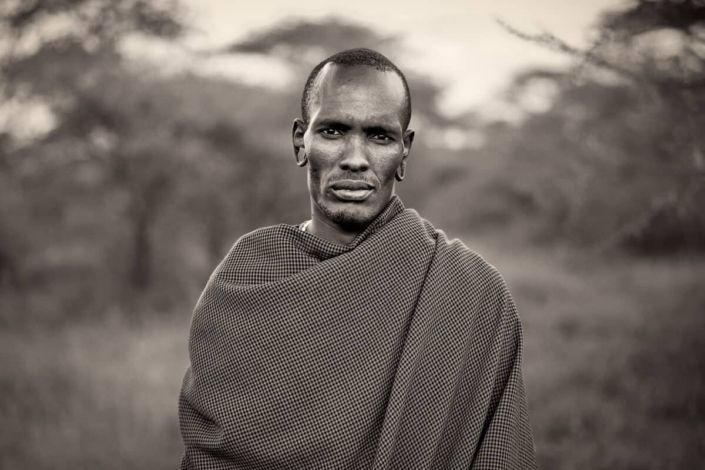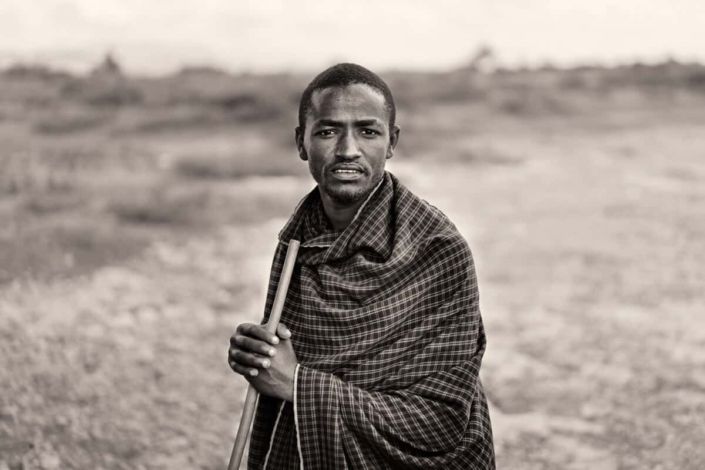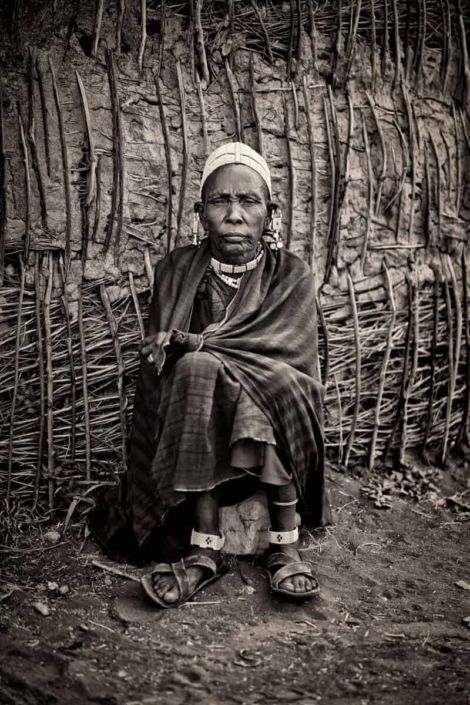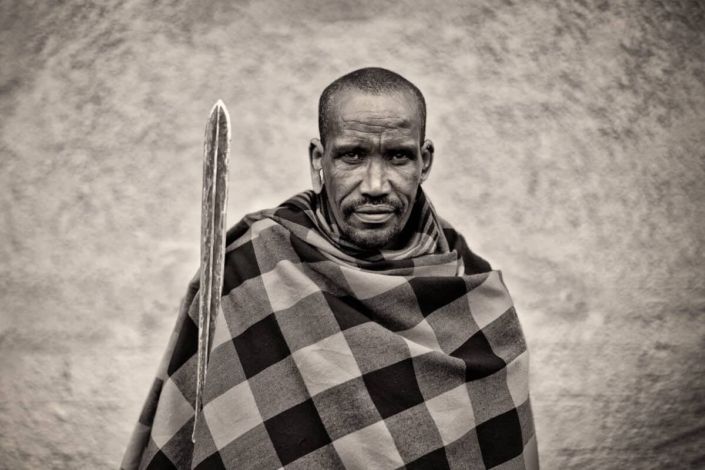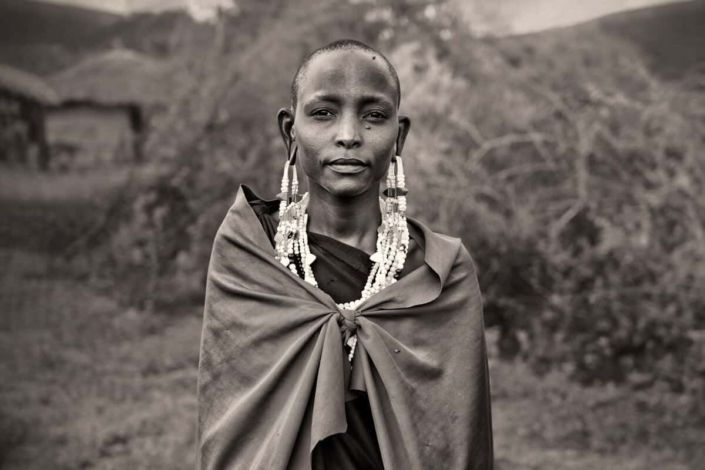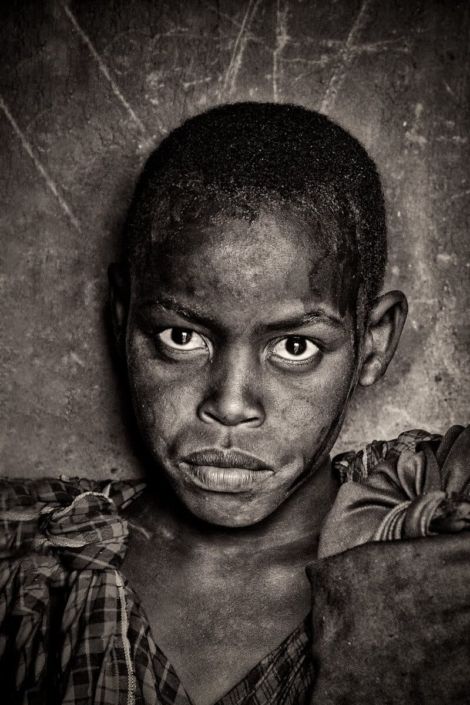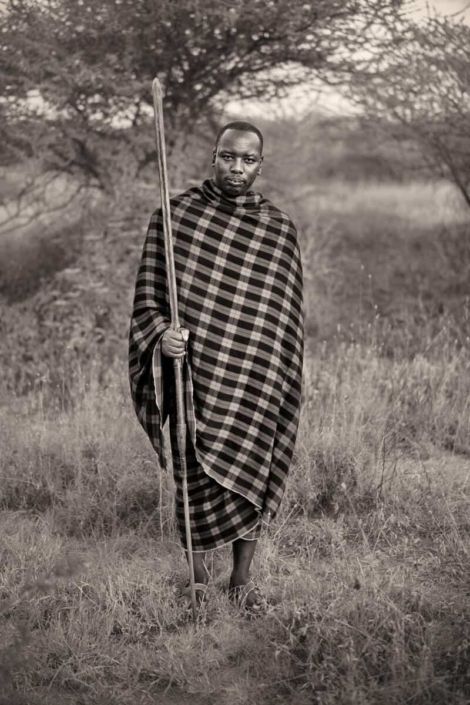Artist Statement
In February 2019, New Zealand based photographer Ilan Wittenberg visited Tanzania, where he met a few of the Maasai community and took the opportunity to capture their portraits. “I made special efforts to connect with the indigenous population and was very fortunate to create these extraordinary portraits. These are not candid snapshots, but carefully composed portraits that honour the Maasai people. I did not plan to create these portraits but was overwhelmed when I first saw members of the tribe,” Wittenberg explains.
During his time with the Maasai people, Wittenberg learned a lot about their way of life. He says Maasai people endeavour to hold onto their traditional way of life and maintain a strongly patriarchal society, which sees elder men deciding on most major matters for each Maasai group. They wear simple sandals which until recently were made from cowhides. They are now soled with tire strips or plastic. The Maasai are famous for their fearsome reputations as warriors. Piercing and stretching of earlobes is common using thorns for piercing, twigs, bundles of twigs, stones, the cross section of elephant tusks. Both men and women wear wooden bracelets. The Maasai women regularly weave and bead jewellery. This beadwork plays an essential part in the ornamentation of their body. Beadworking, done by women, has a long history among the Maasai, who articulate their identity and position in society through body ornaments and body painting. Before contact with Europeans, the beads were produced mostly from local raw materials. White beads were made from clay, shells, ivory, or bone, black from iron. late in the nineteenth century, great quantities of brightly colored European glass beads arrived in Southeast Africa, beadworkers replaced the older beads with the new materials and began to use more elaborate color schemes. Currently, dense, opaque glass beads with no surface decoration and a naturally smooth finish are preferred.
Ilan’s first encounter with the tribe was at a lodge located near the Ngorongoro Crater, which is a national reserve for wildlife animals, where Wittenberg was touring and photographing the wildlife. The Maasai were working at the lodge when Wittenberg approached them to ask if he could create their portrait. “One of the men spoke English, which helped me make contact with the others. I only had a brief time as they were busy working and I was a member of the tour group, focusing on wildlife photography. I immediately saw the potential to document this culture and seized every opportunity — early morning or late afternoon — to make contact with the local community and document them on every stop of our journey across Tanzania.” Wittenberg said he would ask permission from each person he wanted to photograph in an attempt to create rapport with them. He had asked a local tour guide to teach him how to say “My name is Ilan. What is your name?” in Maa. He’d repeat this on every encounter and the Maasai people opened up to Wittenberg, allowing their portrait to be created. “I connected with a few of the younger generation Maasai who had smartphones with WhatsApp. After completing the series, I sent them a link to the album and asked them to show it in the village. They were so proud and delighted with the outcome. They said the album shows that I really love the people.”
When finalising the series, Wittenberg converted Maasai People into film-like monochrome. “The heightening of contrast helps to create a sense of drama, lending to the series a unifying style that emulates analogue lithographic techniques”. He explains that although some may consider it ‘wrong’ to lose the authentic colours, he feels that the monochrome treatment is timeless and helps to bring the portraits together, creating a flow throughout the portfolio series. “Our eyes are attracted to certain colours such as red and yellow, so converting the photos into sepia makes us focus on the body language, expressions, forms and shapes without any distraction. It makes the portraits extraordinary.


